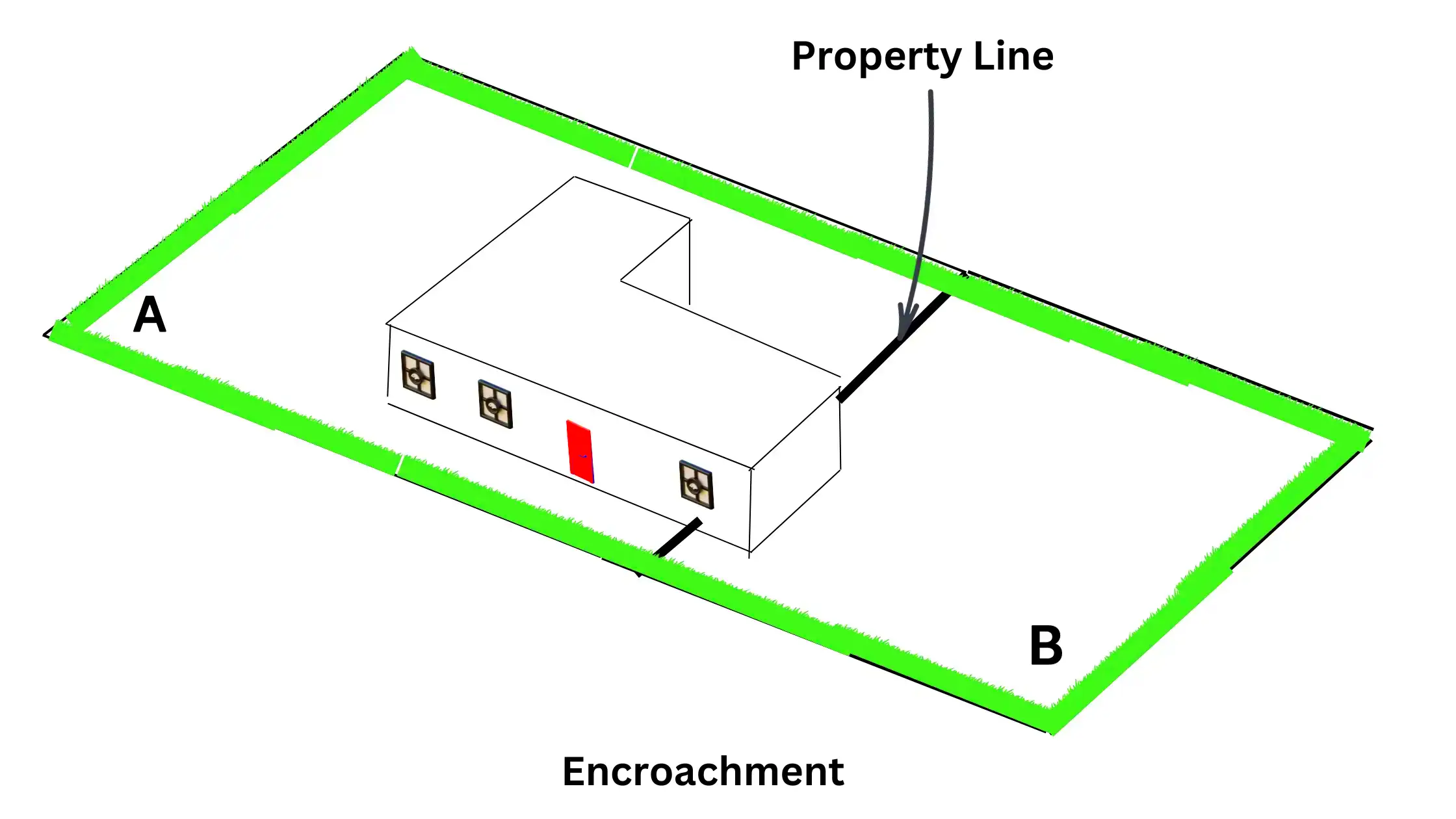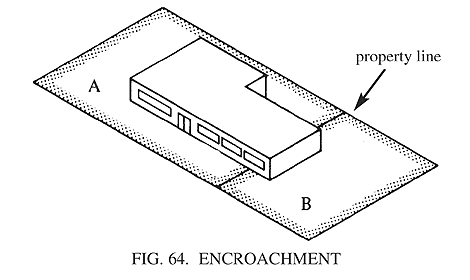How Encroachment Issues are Resolved in California Property Law
Encroachment refers to a situation where one property owner unlawfully extends their property into another’s space. This can happen in various ways, such as fences, buildings, or landscaping that cross property lines. It’s a common issue that can lead to disputes between neighbors. Understanding encroachment is crucial for homeowners and property investors to protect their rights and maintain good relationships with neighbors.
Common Types of Encroachment Issues

There are several types of encroachment issues that property owners may encounter. Here are some common examples:
- Fences: A fence that is built on a neighbor’s property line without permission.
- Buildings: Any structure, like a shed or garage, that extends onto adjacent land.
- Landscaping: Trees, shrubs, or plants that grow across property lines.
- Driveways: A driveway that crosses over a neighbor’s property.
- Overhanging Structures: Features like eaves or balconies that extend into neighboring properties.
Understanding these types of encroachments can help property owners identify potential issues and take proactive steps to resolve them.
Legal Framework Governing Encroachment in California
California has specific laws and regulations that address encroachment issues. These laws are designed to protect property rights and provide a framework for resolving disputes. Key elements of the legal framework include:
- Property Lines: The law recognizes clear property boundaries, and property owners have the right to their land.
- Adverse Possession: In some cases, if someone has used another’s property for a long time without objection, they may claim ownership through adverse possession.
- Local Ordinances: Different cities or counties may have specific regulations regarding property lines and encroachment.
- Mediation and Litigation: California encourages mediation as a first step in resolving disputes. If mediation fails, parties may resort to litigation to settle the matter in court.
It’s essential for property owners to understand these laws to protect their interests and navigate potential encroachment disputes effectively.
Steps to Resolve Encroachment Disputes
Resolving encroachment disputes can be challenging, but taking the right steps can help make the process smoother. Here’s a simple guide to follow if you find yourself in this situation:
- Identify the Encroachment: Begin by clearly identifying the encroachment issue. Take photographs and gather any documents that can help illustrate the problem.
- Review Property Lines: Check your property deed and survey maps to confirm where your property lines are. This information is crucial in understanding the extent of the encroachment.
- Talk to Your Neighbor: Open a line of communication with your neighbor. It’s best to approach them calmly and respectfully. Many disputes can be resolved through simple conversations.
- Consider Mediation: If direct talks don’t work, consider mediation. This is where a neutral third party helps both sides reach an agreement.
- Document Everything: Keep detailed records of all communications, agreements, and actions taken regarding the encroachment. This documentation will be helpful if the issue escalates.
- Seek Legal Advice: If mediation fails, consult a lawyer who specializes in property law. They can provide guidance on the best course of action.
- Prepare for Possible Litigation: As a last resort, you may need to file a lawsuit. Ensure you have all your evidence organized and ready for court.
Taking these steps can help you effectively navigate encroachment disputes and work towards a resolution.
Role of Mediation in Encroachment Issues
Mediation plays a significant role in resolving encroachment disputes without resorting to litigation. It’s a process where both parties come together with a neutral mediator to discuss the issue and explore possible solutions. Here’s how mediation can be beneficial:
- Cost-Effective: Mediation is generally cheaper than going to court, saving both parties time and money.
- Confidentiality: Mediation sessions are private, which means the details of the dispute are not made public.
- Control Over the Outcome: Unlike a court decision, mediation allows both parties to have a say in the resolution. This can lead to a more satisfactory outcome for everyone involved.
- Preservation of Relationships: Mediation promotes a cooperative approach, helping to maintain a good relationship between neighbors.
- Faster Resolution: Mediation can often resolve disputes more quickly than the court system, allowing everyone to move on with their lives.
In California, many courts encourage mediation as a first step before pursuing litigation, recognizing its effectiveness in settling property disputes amicably.
Filing a Lawsuit for Encroachment
If mediation doesn’t resolve the issue, filing a lawsuit may be necessary. While this can be a more daunting step, understanding the process can help. Here’s what to expect when filing a lawsuit for encroachment:
- Consult a Lawyer: Before taking any legal action, it’s crucial to seek advice from a property lawyer. They can help you understand your rights and the best approach.
- Gather Evidence: Compile all documentation related to the encroachment, including surveys, photographs, communication records, and any agreements made during mediation.
- File a Complaint: Your lawyer will help you file a complaint in the appropriate court. This document outlines your case and the relief you seek.
- Notify the Other Party: Once the complaint is filed, the other party must be formally notified about the lawsuit. This is often done through a process server.
- Pre-Trial Motions: Depending on the case, there may be pre-trial motions, where either party can request the court to make certain decisions before the trial starts.
- Trial: If the case goes to trial, both parties will present their evidence and arguments before a judge or jury. The court will then decide the outcome.
- Follow-Up: After the verdict, there may be additional steps, such as enforcing the court’s decision or potentially appealing if you disagree with the ruling.
While filing a lawsuit can be complex and time-consuming, understanding the process and having the right legal support can significantly aid in resolving encroachment disputes.
Preventive Measures to Avoid Encroachment
Preventing encroachment is always better than dealing with it after it happens. Taking proactive steps can help property owners protect their land and maintain good neighborly relations. Here are some effective measures to avoid encroachment:
- Conduct a Property Survey: Hire a professional surveyor to clearly define your property boundaries. This information can help prevent misunderstandings with neighbors.
- Install Clear Markers: Use fences, walls, or boundary markers to visually indicate your property line. This can discourage encroachment from neighbors.
- Communicate with Neighbors: Establish a good relationship with your neighbors. Regular communication can help resolve any potential issues before they escalate.
- Understand Local Laws: Familiarize yourself with local zoning and property laws. Knowing your rights and responsibilities can help you navigate property issues more effectively.
- Keep Records: Maintain clear records of your property deeds and surveys. This documentation can be invaluable if a dispute arises.
- Plan for Landscaping: When planning landscaping or construction, ensure that projects do not extend beyond your property line.
By taking these preventive measures, homeowners can reduce the risk of encroachment issues and create a more harmonious living environment.
Frequently Asked Questions about Encroachment
Encroachment can raise many questions for property owners. Here are some commonly asked questions to clarify this issue:
- What is encroachment? Encroachment occurs when a property owner unlawfully extends their property into another’s land.
- How can I identify an encroachment? Check property lines through surveys and observe physical markers like fences or structures that may cross boundaries.
- What should I do if I discover an encroachment? Document the encroachment, talk to your neighbor, and consider mediation if necessary.
- Can I be penalized for encroachment? Yes, property owners may face legal consequences if they infringe on someone else’s property rights.
- Is mediation effective for encroachment disputes? Yes, mediation can be a cost-effective way to resolve disputes without going to court.
- What happens if mediation fails? If mediation does not resolve the issue, you may need to consider legal action by filing a lawsuit.
These FAQs provide a basic understanding of encroachment issues and how to handle them effectively.
Conclusion on Resolving Encroachment Issues
Encroachment issues can be a source of stress for property owners, but with the right approach, they can be resolved. By understanding what encroachment is, recognizing its various forms, and taking preventive measures, homeowners can significantly reduce the likelihood of disputes. Open communication with neighbors, along with legal knowledge, is essential for maintaining a peaceful living environment.
When issues arise, remember that mediation is often the best first step. It’s a cost-effective way to settle disputes while preserving relationships. If mediation fails, seeking legal counsel and understanding the litigation process will help protect your rights. Ultimately, being proactive and informed is the key to resolving encroachment issues effectively and maintaining harmony in your community.


